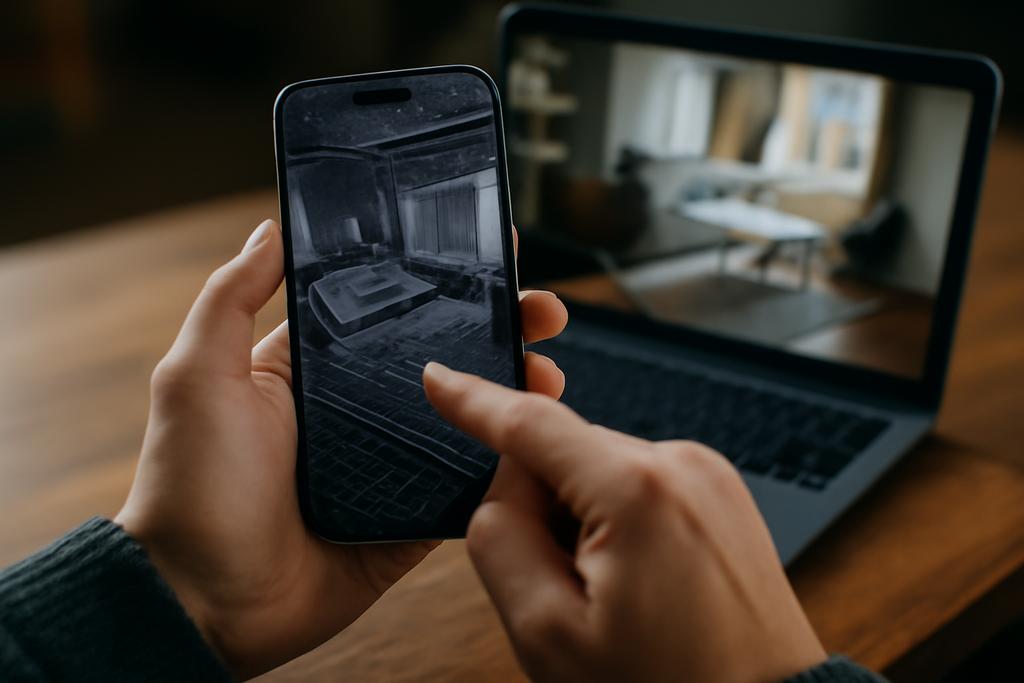A Leap in 3D Reconstruction
Imagine a world where your phone could instantly create a detailed, three-dimensional model of any room, building, or even an entire city block, all without relying on clunky scanning equipment. This isn’t science fiction—it’s the promise of advancements in online dense reconstruction, a field that’s rapidly changing our ability to perceive and interact with the physical world. A recent breakthrough by a team of researchers from the National University of Defense Technology in China and Peking University, detailed in their paper “RemixFusion: Residual-based Mixed Representation for Large-scale Online RGB-D Reconstruction,” is pushing this vision closer to reality.
The Challenge of Scale and Detail
Creating accurate 3D models from simple video is a deceptively tough problem. Traditional methods, such as those using Truncated Signed Distance Functions (TSDFs), store 3D information as a dense grid of values. This approach works well for small spaces, but the memory requirements skyrocket as the area grows. Think of trying to paint a landscape on a canvas that’s only a few inches wide; you can capture the important details, but only at a tiny scale.
Newer, neural-based techniques are more memory-efficient. They represent the scene as a complex function that a neural network can learn. This is analogous to describing the landscape with poetic prose instead of pixel-perfect painting – much more compact, but harder to get the detail just right. While these techniques excel at capturing the overall shape, they often struggle to retain fine-grained features like the individual leaves on a tree, or the cracks in a wall.
Researchers have long attempted to strike a balance between efficient memory use and high-fidelity details in large-scale reconstructions. The RemixFusion approach offers a creative solution to this age-old dilemma.
RemixFusion: The Best of Both Worlds
The core innovation of RemixFusion is its clever combination of traditional explicit and modern implicit representations. This strategy avoids the shortcomings of both existing approaches. Instead of relying on one method or the other, RemixFusion uses a hybrid approach — sort of like pairing a rough sketch with a detailed oil painting to capture both the broad strokes and the delicate nuances of a scene.
The system starts by constructing a coarse, low-resolution TSDF grid which stores only the general shape of the environment. This grid serves as a base, a foundation for the more detailed information to be layered on top. Then, a neural network is trained to learn the fine-grained, high-frequency details—the “residuals”—that need to be added to the basic model to create the complete, highly detailed reconstruction.
This is incredibly smart: By offloading the responsibility of capturing low-frequency information to the TSDF grid, the neural network can focus its efforts on the more challenging, high-frequency details, effectively increasing the resolution without the associated memory costs. This mixed approach is akin to having a seasoned architect design the overall blueprint of a building, and a meticulous artisan adding the intricate carvings and decorative elements later.
Beyond Reconstruction: Smarter Pose Estimation
The benefits of RemixFusion aren’t limited to just 3D reconstruction. The team also tackled the problem of camera pose estimation—figuring out the precise location and orientation of the camera at each point in time—which is crucial for creating a consistent 3D model. Traditional methods often rely on optimizing the camera poses directly, which can lead to instability and inaccuracy, especially in large-scale environments.
Instead, RemixFusion utilizes a novel approach to bundle adjustment, a technique used to refine camera poses, by optimizing only the *changes* in pose. Think of it like this: instead of meticulously positioning each piece of a puzzle individually, RemixFusion focuses on the relative movements between adjacent pieces. This subtle shift in perspective leads to a more robust and efficient optimization process.
Adaptive Gradient Amplification: Escaping Local Minima
Another key innovation in RemixFusion is its incorporation of an “adaptive gradient amplification” technique. During the optimization process, there’s always a risk of getting trapped in a local minimum—a suboptimal solution where the algorithm can’t find a better one, even if it exists. This is especially problematic in large-scale reconstructions.
RemixFusion addresses this issue by amplifying the gradients near the reconstructed surface, essentially giving the algorithm an extra push towards a more accurate solution. This approach is akin to a hiker strategically adjusting their path to avoid getting stuck in a small depression, ensuring they reach the summit efficiently.
Results and Implications
The researchers evaluated RemixFusion on several large-scale datasets, comparing it against state-of-the-art methods. The results were striking: RemixFusion consistently outperformed other approaches in terms of both reconstruction accuracy and the speed and efficiency with which it could achieve those results.
Specifically, RemixFusion significantly improved the accuracy of camera tracking and generated more complete 3D models compared to its counterparts. The method was not only more accurate, but also notably faster, able to reconstruct large environments in real-time—an impressive feat given the complexities of the task. This real-time capability is key for practical applications such as augmented reality, robotics, and autonomous navigation.
Looking Ahead
The work on RemixFusion showcases a significant leap forward in online dense reconstruction. While the approach is remarkably effective, the authors themselves acknowledge some limitations, particularly in scenarios where depth information is incomplete. Future research will likely focus on addressing such limitations and scaling RemixFusion to even larger environments.
Despite these challenges, the results are undeniably impactful. The ability to generate detailed, accurate 3D models in real-time opens up exciting new possibilities across numerous fields. From creating more immersive AR experiences to designing more sophisticated robots capable of navigating complex environments, RemixFusion’s potential applications are far-reaching and transformative. This research highlights the continuing power of combining established techniques with innovative new approaches to solve some of the most daunting challenges in computer vision.










